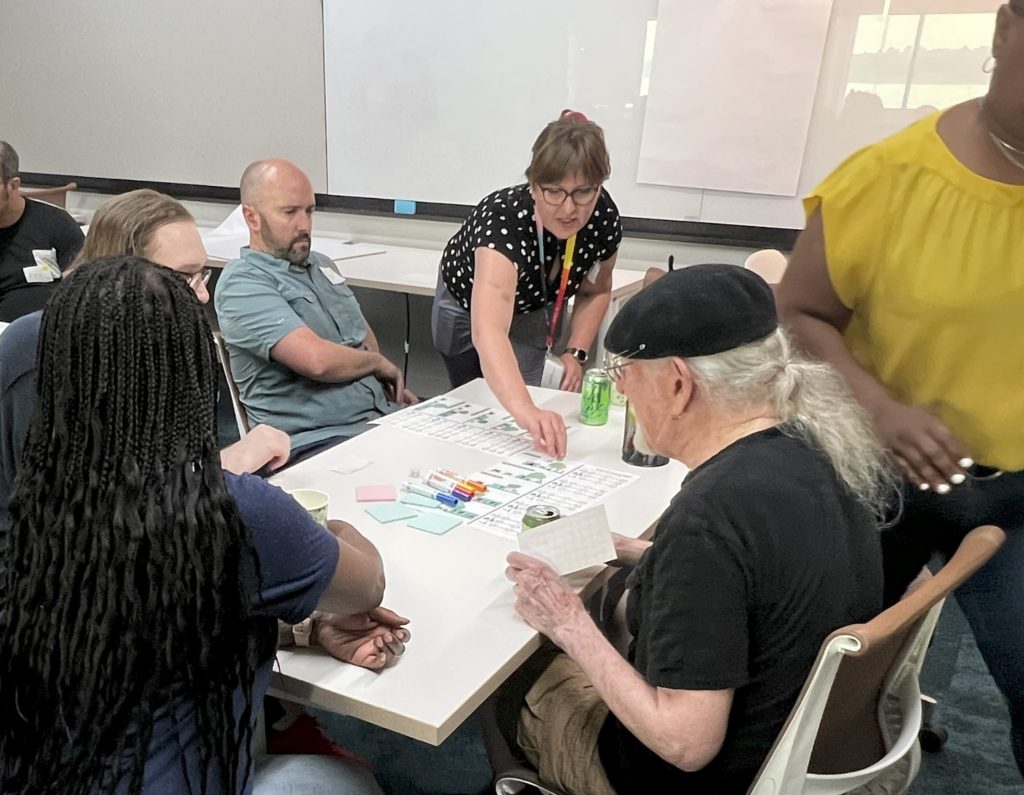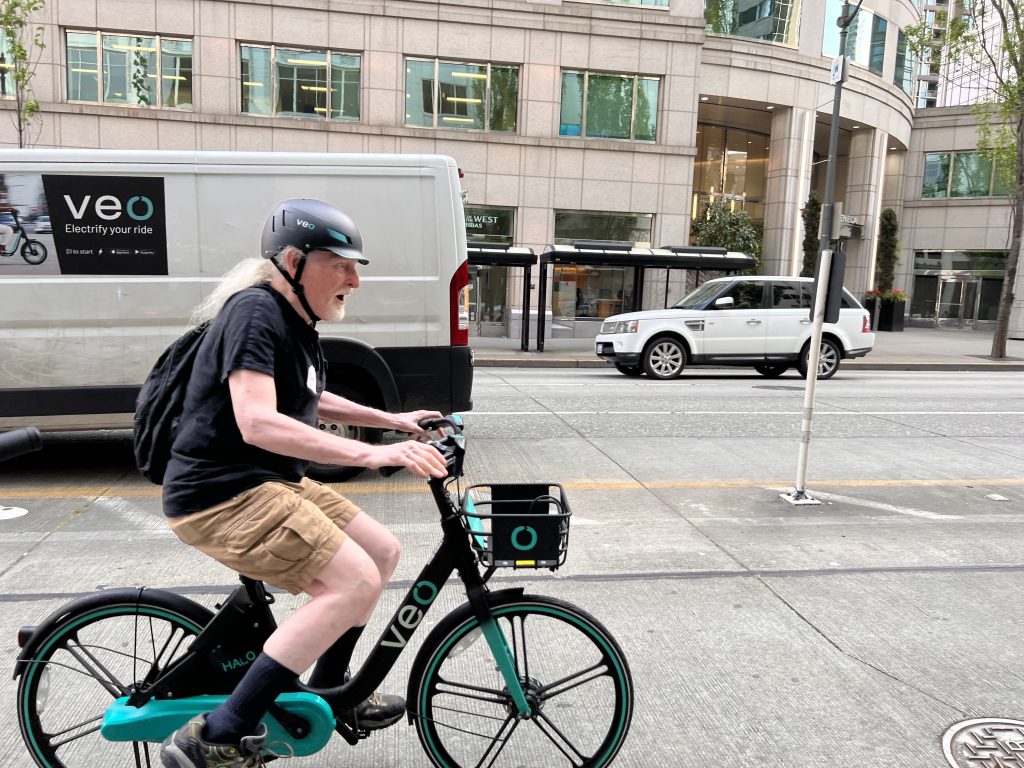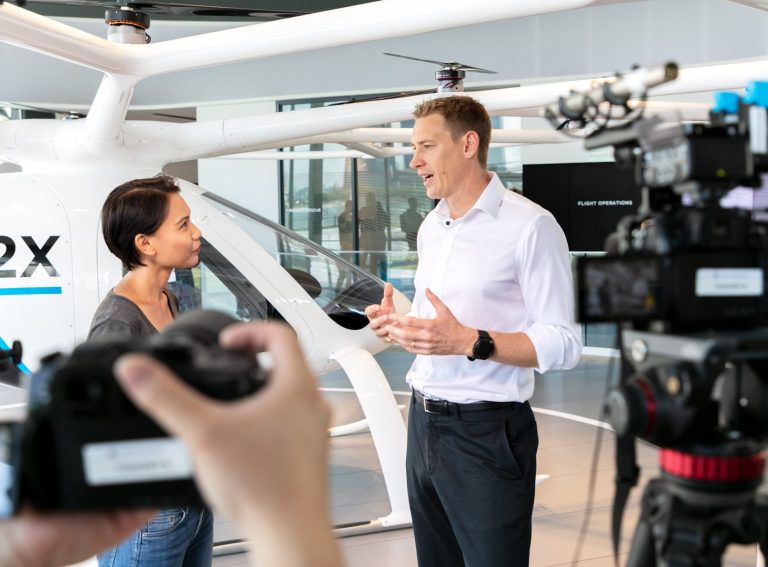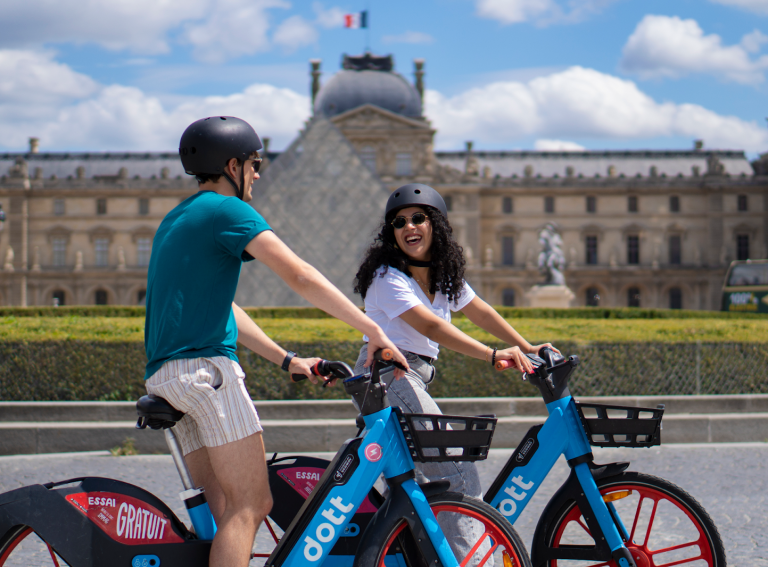Veo has always lived and breathed accessibility.
The US-based micromobility OEM was one of the first shared operators to launch a seated e-scooter and that device has since offered “far better levels of accessibility” than standing alternatives, according to feedback from the nearly 10,000 people that completed Veo’s 2023 rider survey.
Now it’s taking accessibility one step further with the launch of a new report ‘From Trikes to Seated Scooters: Increasing Access to Micromobility through Vehicle Design’.
“When speaking to people with knee injuries or someone that isn’t able to use one of their legs, we found that our seated devices provide them with access to micromobility that does not exist elsewhere at scale,” Paige Miller, the report’s co-author and Senior Manager for Policy and Communications at Veo, tells Zag Daily.
“A lot of the micromobility firms that sprung up in 2017 were founded by men,” Miller explains.
“And they deployed vehicle types that young tech bros wanted to ride. But if you bring more people into your design process with different needs, they are sure to come up with something different than if you had just done it yourself.”

Combining data with real-life learning
Investigating the results from the rider survey, Miller found that Veo’s seated e-scooter, the Cosmo, and seated throttle-assist e-bike, the Cosmo-e, were not only the preferred vehicle types across all cohorts, but were particularly favoured among women, non-binary riders, people with disabilities and riders over the age of 45. These riders tend to be underrepresented in micromobility ridership, so Veo decided to dive deeper to understand how to better serve them.
“From there we decided to focus on older riders and those with disabilities because based on our survey results, they had defined a stronger preference for the seated vehicles,” she explains.
However, to ensure its report was as in-depth and thorough as possible, Veo ran four focus groups in the micromobility hotspot of Seattle to complement its research.

Veo held focus groups with underrepresented riders in partnership with community-based organisations. During the focus groups, participants were asked to test a wide range of vehicles before answering questions on comfort level, the type of trips the vehicle was best suited for and their overall opinion of the vehicle.
“Seattle was a great fit for the focus groups because 20% of our riders there have a disability and 25% are over 45,” Miller says.
“We received 500 survey responses from that city alone.”
For example, one respondent said that the Cosmo-e is the “only vehicle” they can use due to them being paralysed in the right leg.
“Before Veo, I had no way to leave my house,” they added.
“The whole process took about a year from start to finish,” Miller explains.
Key takeaways
Analysing the data, Miller was quickly struck by the role that simple features can play in improving the accessibility of a range of vehicles and therefore centred her recommendations on the ways in which vehicle design should be adapted.
“Vehicles with a throttle that allow riders to propel themselves without pedalling make a big difference for people that cannot pedal or don’t feel comfortable pedalling,” Miller says.
“Meanwhile, we found that a lower centre of gravity and larger tires create a greater sense of stability and comfort when navigating uneven surfaces.”
Miller also learned that the current level of focus on producing standing scooters is leading to underrepresented groups being excluded and unaccounted for by the micromobility industry.
“Riders aged 45 above and people with disabilities are nearly twice as likely to prefer seated, throttle-assisted vehicles than standing scooters,” she continues.
“We found that innovation is really important because most vehicles currently available on the shared market do not meet the access needs of the groups our report focused on.”

The report further calls for an increased number of mixed fleets as they better support and cater to a diverse population. “Operators need to offer a range of vehicle types to meet the different needs and preferences of people in their community,” says Miller.
“We would like to see policy tools used to increase access, which would include mandating and incentivising providers to offer mixed fleets that also guarantee vehicles with accessible features are made available.
“And then community engagement by the city authorities when bringing in a new provider is essential too, because what works in one location may not work in another.”
Elevating the importance of vehicle type
Veo is already looking to act upon the feedback collected for the white paper and CEO Candice Xie is keen to explore the development of a trike that doesn’t require the rider to self-balance.
“Even when looking at seated, throttle-assisted vehicles, more can be done to increase accessibility levels.”
In the past two years Veo launched a second-gen version of the Cosmo and unveiled the Apollo Class II, a dual-passenger seated e-bike that aims to make tandem riding more accessible. Both have cargo capacity in-built, a fact that was highlighted in the report in supporting people with grocery shopping or running errands.
“We published this report with the aim of elevating the topic of vehicle type in conversations about micromobility access,” Miller says.
“We hope this effort will inspire further research and better equip decision makers with the information they need to make micromobility a viable option for more riders.”





